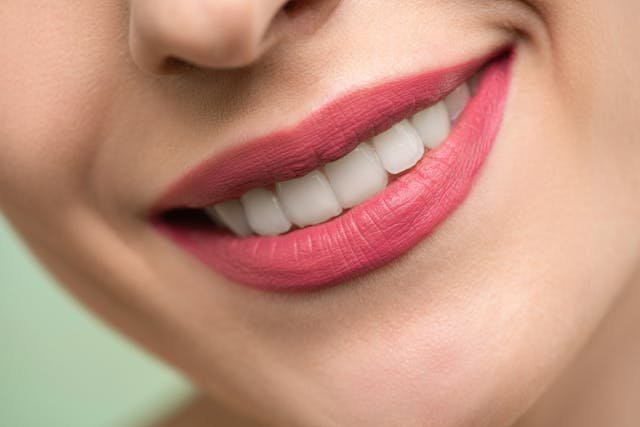Bridges and crowns are standard dental prosthetics utilized to habilitate the function and aesthetics of a patient’s smile. A dental bridge is a gadget that replaces one or more missing teeth, while a dental crown is a cap that shields a damaged or weakened tooth. These prosthetics are devised to improve a patient’s oral health, overall bite, and appearance. But can bridges be hooked to crowns? The answer is yes, and we will analyze how a dental bridge can be linked to crowns to repair the functionality and impression of the patient’s teeth.
Understanding Dental Bridges and Crowns
A dental bridge consists of a false tooth or teeth, named pontics, harbored in place by crowns on either side of the gap. These crowns, also called abutment teeth, are over the natural teeth or dental implants bordering on the missing tooth or teeth. This dental restoration is immaculate for individuals with one or more missing teeth.
On the other hand, dental crowns cover and safeguard a tooth that has had extensive restoration, is weak, or both. They can be manufactured from various materials, including gold alloys and porcelain fused to metal. When the tooth’s structure is compromised, and a filling, an inlay, or an onlay is insufficient to restore its function and appearance, crowns are frequently employed.
The Process of Attaching Bridges to Crowns
- Preparing the Teeth: The first step in attaching a bridge to crowns is scheduling the abutment teeth. The dentist will remove a small portion of the enamel and dentin from the teeth adjacent to the gap, permitting the crowns to fit correctly. Assume the abutment teeth have significant decay or damage. In that case, the dentist may require further procedures, such as root canal therapy, to ensure the tooth is healthy enough to support the bridge.
- After the abutment teeth are prepared, the dentist will take their impressions. These impressions will be dispatched to a dental laboratory, where they will be used to assemble permanent bridges and crowns. A temporary bridge is put in place to defend the prepared teeth and conserve the patient’s bite while the permanent restoration is being made.
- Construction of the Bridge and Crowns: At the dental laboratory, an acquainted technician will utilize the impressions to formulate a bridge and crowns that are specifically sized, shaped, and colored to fit the patient’s teeth. The materials used for the bridge and crowns can alter depending on the patient’s necessities and preferences, and the procedure may take a few weeks.
- Fitting the Permanent Bridge: Once the permanent bridge and crowns are ready, the dentist will extract the temporary bridge and clean the abutment teeth. They will then carefully fit the permanent bridge, ensuring it is appropriately aligned and comfortable. The dentist will create minor adjustments to achieve the perfect fit if necessary.
- Dental cement connects the crowns to the abutment teeth and is the last step in cementing the bridge after the dentist is happy with its alignment and fit. The inside sides of the crowns are overlaid with cement before the bridge is affixed to the ready teeth. The dentist will use a special curing light to solidify the cement, producing a solid and reliable bond.
- Post-Procedure Care: After the bridge cement, the dentist will advise the patient to manage their new rehabilitation. This may enclose brushing and flossing strategies and recommendations for dental check-ups and cleanings to ensure the bridge’s longevity and the health of the surrounding teeth.
Benefits of Attaching Bridges to Crowns
Attaching bridges to crowns offers several benefits, including:
- Improved Functionality: Patients can regain proper chewing and speaking capabilities by replacing missing teeth with a dental bridge. Additionally, the crowns on either side of the bridge provide support and stability to the abutment teeth, ensuring optimal bite function.
- Aesthetic Enhancement: Dental bridges and crowns are custom-made to correspond the patient’s natural teeth in size, shape, and color. This results in a seamless and natural-looking restoration that enhances the patient’s smile.
- Prevention of Further Dental Issues: Missing teeth can cause the surrounding teeth to shift, leading to bite misalignment and a higher risk of gum disease and tooth decay. Patients can prevent further dental issues and maintain their oral health by replacing missing teeth with a dental bridge supported by crowns.
- Longevity: With proper care and maintenance, dental bridges and crowns can last 10 to 15 years. This makes them a cost-effective and long-lasting solution for patients with missing teeth.
Bridges can be attached to crowns to habilitate the function and aesthetics of a patient’s smile. This dental rehabilitation procedure involves several steps, including tooth preparation, impressions, and custom bridges and crowns. The advantages of this treatment include improved functionality, aesthetic enhancement, precluding of further dental issues, and longevity. With reasonable care and periodic dental check-ups, patients can relish the benefits of their dental bridges and crowns for numerous years. For more information for crowns bridges click here.
















